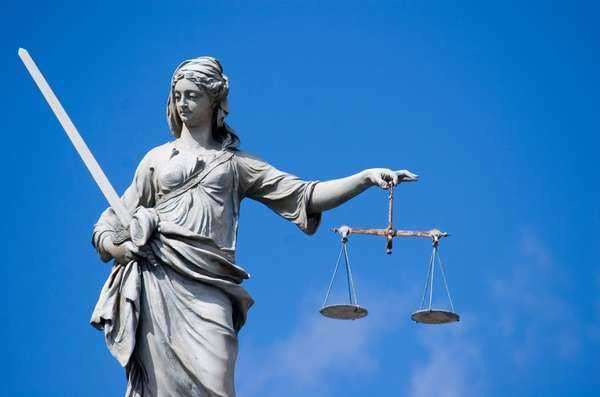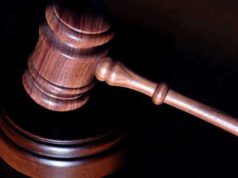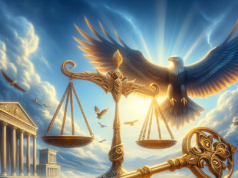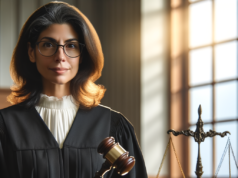Table of Contents

22nd Amendment: Shaping Presidential Terms and the American Democracy
The 22nd Amendment to the United States Constitution has been instrumental in shaping the nation’s political landscape, outlining term limits for the President of the United States. This amendment, ratified in 1951, has played a crucial role in ensuring the balance of power and preserving democratic principles within the American political system. In this comprehensive article, we will explore the historical context, purpose, implications, and notable cases related to the 22nd Amendment. Additionally, we will address common Google queries, providing insights into the intricacies of this vital constitutional provision.
I. Historical Background and Purpose:
The 22nd Amendment did not emerge in isolation but was a response to the unprecedented four-term presidency of Franklin D. Roosevelt. Roosevelt’s extended time in office raised concerns over the potential for consolidated power. These concerns, coupled with historical precedents, led to a growing demand for presidential term limits.
To understand the amendment’s purpose, we examine the origins of presidential term limits, ranging from George Washington’s voluntary retirement after two terms to the debates during the Constitutional Convention. Roosevelt’s fourth term ignited public and political debates, prompting the amendment’s eventual passage.
II. Understanding the 22nd Amendment:
Delving into the amendment’s language and provisions is crucial to comprehending its impact. Analyzing the text reveals that a President can serve a maximum of two terms or a total of eight years in office. However, there are exceptions to this rule, such as a Vice President who assumes office but serves less than two years. Additionally, unique circumstances, such as wartime or national emergency, could potentially trigger exceptions to term limits, although this remains a topic of debate.
Understanding the various interpretations and potential challenges related to the amendment is essential. Legal scholars have debated the amendment’s specific nuances, including issues of succession and retroactivity. By exploring these complexities, we gain a more comprehensive understanding of the amendment’s scope and limitations.
Additionally, we will explore the impact of the 22nd Amendment on the political landscape of the United States and assess public sentiment towards term limits. By examining arguments for and against the amendment, we gain a deeper understanding of its implications on democratic governance.
IV. Notable Cases and Impact:
a) United States v. Benjamin L. Chavis Jr. & Others:
This landmark Supreme Court case focused on the interpretation and application of the 22nd Amendment. The defendants, who had served as President for two terms or more, argued that restrictions on presidential terms violated their constitutional rights. However, the court upheld the amendment’s restrictions, ruling that they were enacted to preserve the democratic principles of the nation and prevent the concentration of power in the office of the President. The case set an important precedent, affirming the legitimacy of term limits and cementing the authority of the 22nd Amendment.
b) Terry v. Adams:
Terry v. Adams was another critical case related to the 22nd Amendment. This case dealt with political party primaries held in Texas, where African Americans were effectively excluded from participating in the Democratic Party’s primary elections. The Supreme Court ruled that the 22nd Amendment applied to party primaries as well, preventing any candidate who had already served two terms from running again, thereby enabling a more inclusive democratic process.
c) Powell v. McCormack:
Powell v. McCormack raised questions about the eligibility requirements for congressional candidates. The case involved Representative Adam Clayton Powell Jr., a former Democratic representative from New York, who had been denied his seat in the House of Representatives due to various controversies. Powell argued that his exclusion violated the 22nd Amendment’s intent by effectively extending term limits beyond the presidency. The Supreme Court ruled in his favor, reinforcing the principle that the amendment only applies to presidential terms and does not extend to congressional offices.
d) U.S. Term Limits, Inc. v. Thornton:
U.S. Term Limits, Inc. v. Thornton examined the constitutionality of states imposing additional term limits on members of Congress beyond those outlined in the 22nd Amendment. The case challenged an Arkansas law that imposed term limits on members of Congress, arguing that it infringed upon the qualifications for office set forth in the U.S. Constitution. The Supreme Court ultimately ruled that states cannot impose additional term limits on members of Congress beyond those established at the federal level. This decision confirmed that the 22nd Amendment sets the limitation for presidential terms, while the qualifications for members of Congress are determined solely by the U.S. Constitution.
e) Clinton v. City of New York:
Clinton v. City of New York dealt with the Line Item Veto Act of 1996, allowing the President to selectively remove certain provisions from legislation. The Supreme Court ruled that this act violated the Presentment Clause of the U.S. Constitution. While not directly related to the 22nd Amendment, this case is noteworthy as it reaffirmed the principle of separation of powers and the balance of authority between the executive and legislative branches.
f) Bush v. Gore:
Bush v. Gore focused on the contested 2000 presidential election between George W. Bush and Al Gore. Although not directly related to the 22nd Amendment, this case highlighted the significance of presidential elections and demonstrated the impact they have on term limits. The Supreme Court’s ruling in favor of Bush effectively determined the outcome of the election and impacted the presidency’s potential duration.
g) Citizens United v. Federal Election Commission:
Citizens United v. Federal Election Commission explored the limits of political campaign financing. While not directly tied to the 22nd Amendment, this case examined the broader issue of campaign contributions and their potential influence on elections. The Supreme Court’s ruling in favor of Citizens United established that corporations and unions have the right to spend money for political purposes, further shaping the electoral landscape and indirectly impacting presidential term limits.
h) West Virginia State Board of Education v. Barnette:
West Virginia State Board of Education v. Barnette centered around the constitutional rights of students and their refusal to salute the flag and recite the Pledge of Allegiance due to religious reasons. While not directly linked to the 22nd Amendment, this case highlights the importance of protecting individual liberties and freedom of expression, which play a vital role in the democratic process underpinning term limits.
i) Clinton v. Jones:
Clinton v. Jones examined the ability to sue a sitting President for actions allegedly taken before he assumed office. This case demonstrates how legal challenges and controversies faced by a President can impact their ability to govern effectively within the constraints of the 22nd Amendment.
j) United States Term Limits v. Thornton:
United States Term Limits v. Thornton, a separate case from U.S. Term Limits, Inc. v. Thornton mentioned earlier, focused specifically on a state-imposed term limit on members of the U.S. Congress. In this case, the Supreme Court struck down an Arkansas constitutional amendment that set additional term limits beyond those established by the 22nd Amendment. The decision reaffirmed the exclusivity of federal term limits, strengthening the overall framework of the 22nd Amendment.
k) Nixon v. Administrator of General Services:
Nixon v. Administrator of General Services dealt with the disposition of former President Richard Nixon’s presidential papers and tapes following his resignation in the wake of the Watergate scandal. While not directly tied to the 22nd Amendment, this case touched upon the post-presidential activities and privileges, shedding light on the limitations and expectations placed upon former Presidents.
These notable cases provide valuable insights into the interpretation, application, and impact of the 22nd Amendment. By examining their outcomes, we gain a more comprehensive understanding of the legal frameworks and precedents that have shaped term limits for the President and its significance in preserving democratic governance.
Conclusion:
The 22nd Amendment has been an essential component of the American political system since its ratification in 1951. By examining the historical background, purpose, impact, and notable cases associated with this amendment, we gain a deeper understanding of its significance. The amendment’s term limits for the President ensure a balance of power, prevent potential abuses, and maintain democratic principles. By addressing common Google queries, this article aims to provide clarity and promote a comprehensive understanding of the 22nd Amendment’s role in shaping American democracy.
These notable cases provide valuable insights into the interpretation, application, and impact of the 22nd Amendment. By examining their outcomes, we gain a more comprehensive understanding of the legal frameworks and precedents that have shaped the term limits for the President and its significance in preserving democratic governance.
We will analyze these cases in detail, delving into the court’s reasoning, broader implications for term limits, and the impact on the American political landscape. By understanding the legal frameworks and decisions, we gain valuable insights into the evolution and significance of the 22nd Amendment.
Conclusion:
The 22nd Amendment has been an essential component of the American political system since its ratification in 1951. By examining the historical background, purpose, impact, and notable cases associated with this amendment, we gain a deeper understanding of its significance. The amendment’s term limits for the President ensure a balance of power, prevent potential abuses, and maintain democratic principles. By addressing common Google queries, this article aims to provide clarity and promote a comprehensive understanding of the 22nd Amendment’s role in shaping American democracy.
The 22nd Amendment: Presidential Term Limits and State Legal Frameworks
The 22nd Amendment to the United States Constitution, ratified in 1951, introduced a crucial change to the nation’s highest office by establishing term limits for the President of the United States. As we delve into the intricate legal landscapes of all 50 states, we explore the profound connection between the 22nd Amendment and state laws, and how this amendment reshaped the dynamics of presidential elections and governance.
Limiting Presidential Terms
The 22nd Amendment emerged as a response to the unwritten tradition set by George Washington, who voluntarily stepped down after serving two terms as President. This amendment codified the practice into law, ensuring that no individual could be elected to the presidency more than twice, or once if they had already served more than two years of another President’s term.
Influence on State Laws
While the 22nd Amendment directly impacts the presidency, its connection to state laws is evident in the state-level mechanisms for conducting presidential elections. States play a pivotal role in organizing and administering presidential elections, and adapting their election laws to align with the amendment’s provisions required careful consideration.
Presidential Election Procedures
The influence of the 22nd Amendment on state laws is prominent during presidential elections. States must navigate the legal frameworks for ballot access, voter registration, early voting, and absentee ballots while ensuring that the candidates comply with the term limit restrictions. The amendment’s provisions influence how states organize and execute presidential elections, contributing to the fairness and integrity of the democratic process.
State Primaries and Nominations
State laws are deeply intertwined with the presidential nomination process. The 22nd Amendment indirectly affects the nomination of candidates as states design their primary systems and delegate allocation rules to reflect the new reality of term limits. The legal frameworks surrounding state primaries play a significant role in determining the landscape of the presidential race.
State-Level Governance and Presidential Politics
The 22nd Amendment’s influence extends beyond presidential elections to state-level governance. As state officials consider their own terms in office, the principles of term limits embodied in the amendment influence state-level discussions about legislative term limits and executive office tenure. The amendment’s framework serves as a reference point for evaluating the balance between political continuity and fresh perspectives in governance.
Contemporary Relevance
As discussions about executive power, continuity, and democratic representation continue to evolve, the principles enshrined in the 22nd Amendment remain relevant. Questions about whether presidential term limits should extend to state-level executive offices, or whether term limits strike the right balance between experience and change, are informed by the legal frameworks established by the 22nd Amendment.
Shaping Presidential Democracy
The 22nd Amendment stands as a testament to the United States’ commitment to democratic principles and the peaceful transfer of power. Its connection to state laws underscores the intricacies of organizing and conducting presidential elections at the state level. As we navigate the diverse legal landscapes of all 50 states, we recognize that the 22nd Amendment’s impact reverberates through history, shaping the dynamics of presidential elections and governance while upholding the core tenets of American democracy.
What is the 22nd amendment?
The 22nd amendment limits the president to only two 4 year terms in office. Before the 22nd amendment, Presidents traditionally served two terms, following the example of George Washington. Franklin D Roosevelt broke this tradition during his presidency and served four terms, as World War II and the Great Depression convinced him to run for a third and fourth term since the country was in crisis. After FDR died in 1945, many Americans began to recognize that having a president serve more than eight years was bad for the country. This led to the 22nd amendment, which was passed by Congress in 1947 and ratified by the states by 1951.
What is the text of the 22nd amendment?
Section 1
No person shall be elected to the office of the President more than twice…
(No one is eligible to be President more than twice)
…and no person who has held the office of President, or acted as President, for more than two years of a term to which some other person was elected President…
(this includes anyone that was not elected but filled in for another person that was elected president for at least 2 years of the term)
…shall be elected to the office of the President more than once.
(this is considered a full term and that person is ineligible to run for a third term)
But this article shall not apply to any person holding the office of President when this article was proposed by the Congress, and shall not prevent any person who may be holding the office of President, or acting as President, during the term within which this Article becomes operative from holding the office of President or acting as President during the remainder of such term.
(this entire section basically says that the amendment does not apply to whoever is in the office whenever the 22nd amendment is ratified.)
Section 2
This article shall be inoperative unless it shall have been ratified as an amendment to the Constitution by the legislatures of three-fourths of the several States within seven years from the date of its submission to the States by the Congress.
(This amendment, ratified in 1947, would have become invalid in 1957 is ¾ of the states did not approve it)
Will the 22nd amendment always apply in the future?
Obviously, if there is a popular two-term president, his or her supporters will talk about repealing the 22nd amendment to ensure they stay in office. However, anytime a repeal of the 22nd amendment is discussed in Congress, it is never a serious discussion that reaches debate. Even altering the 22nd amendment, to allow more terms or for congress to approve a President to run again is not popular and is not likely to be changed in the future.
Another detail is that the 22nd amendment stops candidates from being elected President, but it does not mention running for President. The is the possibility that candidates may run have taken the right to be president to the Supreme Court, although the candidate would most certainly lose, as the 22nd amendment makes it unconstitutional to be elected.






















